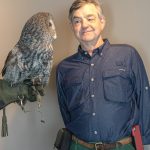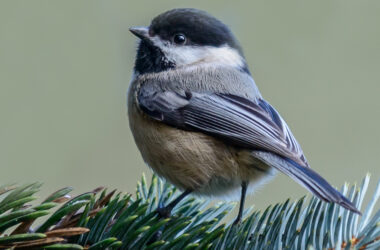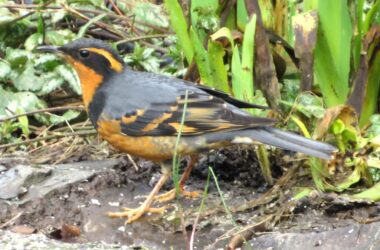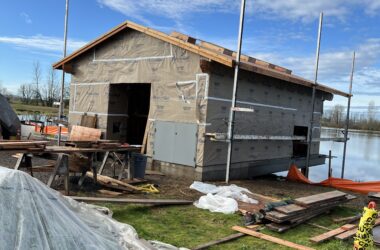The osprey who survived their migration are back at their nests now. Osprey pairs mate for a lifetime, seeking new partners only when tragedy interferes.
Here in south Salem I have seen osprey at three long-established nest sites: South Salem High School, Minto-Brown Island Park north of parking lot #3 and south of the eastern terminus of Madrona Avenue.
In west Salem there is an osprey nest atop the hill at the Audubon Preserve. There is also a nest along Front Street near Riverfront Park. Osprey will restore and re-use nests for years if another, earlier nester doesn’t steal it first. That sometimes happens if bald eagles or great horned owls squat on the property.
Piles of sticks are used to build the nest with a perimeter rising above the center where eggs and later nestlings will be hammocked safely. The female osprey will lay from one to four eggs each spring. If the first brood is lost, the pair may re-nest at least once. The eggs will be laid with days of delay in between.
When the clutch is complete, brooding begins. Both male and female sit on the eggs, mostly the female when she’s not out fishing. An osprey egg is creamy white with brown blotches. Each one is about 2.5 inches long and up to 2 inches in diameter. That’s bigger than large-grade chicken eggs.
Incubation takes about 38 days. After the young hatch they will be in or around the nest for 51-54 days before they begin flight. Even then flight is still being learned. The fledglings won’t begin to try to fish for another one to two months.

Full grown an osprey is nearly two feet tall with a five-foot wingspan. The wings are quite flexible allowing quick and nimble aviation. The wings tuck tightly during the fishing dive.
What are the osprey catching and feeding to their young? In the Willamette Valley mostly largescale suckers, which are numerous and undesirable to anglers. Osprey eyesight is remarkable to us land mammals. They can deal with slant of the reflected light in the water, sun glare on the surface, distortion from wind and waves. With all that they are probably the best land animal at catching fish. Certainly equal to the ablest kingfishers who need catch only tiny fish or aquatic animals. Ospreys are able to catch these fish in shallow, clear water, hovering, then plunging up to three feet into the water. Bald eagles often watch and then steal the fish caught by a neighboring osprey.
Where fish can survive, so can osprey. They are one of the few bird species native to every continent including Australia. Like pronghorn they are unique, in a family with no other surviving species.
My previous piece on osprey for Salem Reporter is here.
Watch a live osprey nest cam in Oregon—at University of Oregon law school: https://law.uoregon.edu/osprey.
For information about upcoming Salem Audubon programs and activities, see www.salemaudubon.org, or Salem Audubon’s Facebook page.
Harry Fuller is an Oregon birder and natural history author of “Freeway Birding” and the newly-published “Birding Harney County.” He is a member of the Salem Audubon Society. Contact him at [email protected] or atowhee.blog. His “Some Fascinating Things About Birds” column appears regularly in Salem Reporter.
SUPPORT OUR WORK – We depend on subscribers for resources to report on Salem with care and depth, fairness and accuracy. Subscribe today to get our daily newsletters and more. Click I want to subscribe!

Harry Fuller is an Oregon birder and natural history author of three books: “Freeway Birding,” "Great Gray Owls of California, Oregon and Washington," and "San Francisco's Natural History--Sand Dunes to Streetcars." He leads birding trips for the Malheur Field Station. He is a member of the Salem Audubon Society, and leads bird trips locally. Harry has just published a new book, BIrding Harney County.









